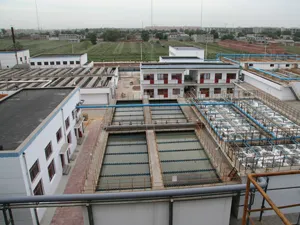Additives for Plastic Recycling Enhancing Sustainability and Efficiency
In recent years, the recycling of plastics has taken center stage in the quest for sustainable waste management solutions. With the ever-increasing accumulation of plastic waste and the environmental challenges it poses, the need for efficient recycling processes has never been more critical. One of the key components in enhancing plastic recycling is the incorporation of additives, which play a crucial role in improving the quality, efficiency, and overall effectiveness of recycling operations.
Understanding Plastic Additives
Plastic additives are substances added to plastics to improve their performance and processing characteristics. These additives serve various functions, such as enhancing durability, flexibility, and UV resistance, as well as improving manufacturing capabilities. In the context of recycling, certain additives can significantly enhance the properties of recycled plastics, making them more suitable for reuse in various applications.
Types of Additives Used in Recycling
1. Stabilizers These additives help to prolong the life of plastics during processing and storage. They prevent degradation caused by heat, light, and oxygen, ensuring that the recycled material retains its desirable properties. For instance, antioxidant stabilizers can minimize the oxidation process during the recycling of polyolefins, thereby preserving their mechanical strength.
2. Compatibilizers In many cases, recycled plastics consist of multiple types of polymers that may not blend well together due to differing chemical properties. Compatibilizers are used to enhance the interaction between these different polymer types, leading to a more homogeneous blend. This is crucial for improving the performance of recycled plastics, enabling them to be used in more demanding applications.
3. Lubricants These additives improve the processing efficiency of recycled plastics by reducing friction during the melting and shaping processes. This not only enhances the flow of materials but also helps in reducing energy consumption during manufacturing, contributing to more sustainable practices.
additives for plastic recycling

4. Colorants and Fillers To enhance the aesthetic and functional properties of recycled plastics, colorants and fillers are employed. These additives can provide specific coloration and improve the mechanical properties of the final product, making recycled plastics more appealing for consumers and manufacturers alike.
The Role of Additives in Closed-Loop Recycling
Closed-loop recycling refers to the process of recycling plastics back into products of the same type. Additives are vital in this process as they enable the production of materials that meet the specifications and quality standards required for specific applications. With the right combination of additives, recycled plastics can rival virgin materials in quality, making the closed-loop recycling process not only feasible but also economically viable.
Challenges and Considerations
While additives offer numerous benefits, their use is not without challenges. The compatibility of additives with different types of plastics can vary, and their long-term effects on the recycled product’s performance can be difficult to predict. Moreover, the introduction of certain additives may raise regulatory concerns, especially if they could leach into food or affect human health.
Conclusion
As the world moves towards a more circular economy, the role of additives in plastic recycling cannot be understated. They are essential in enhancing the quality and functionality of recycled plastics, thus supporting the transition to more sustainable practices. By continuing to innovate and develop new additives tailored for recycling applications, the plastics industry can make significant strides in reducing waste and promoting environmental sustainability. Ultimately, the integration of effective additives will not only bolster recycling efforts but also pave the way for a healthier planet.

